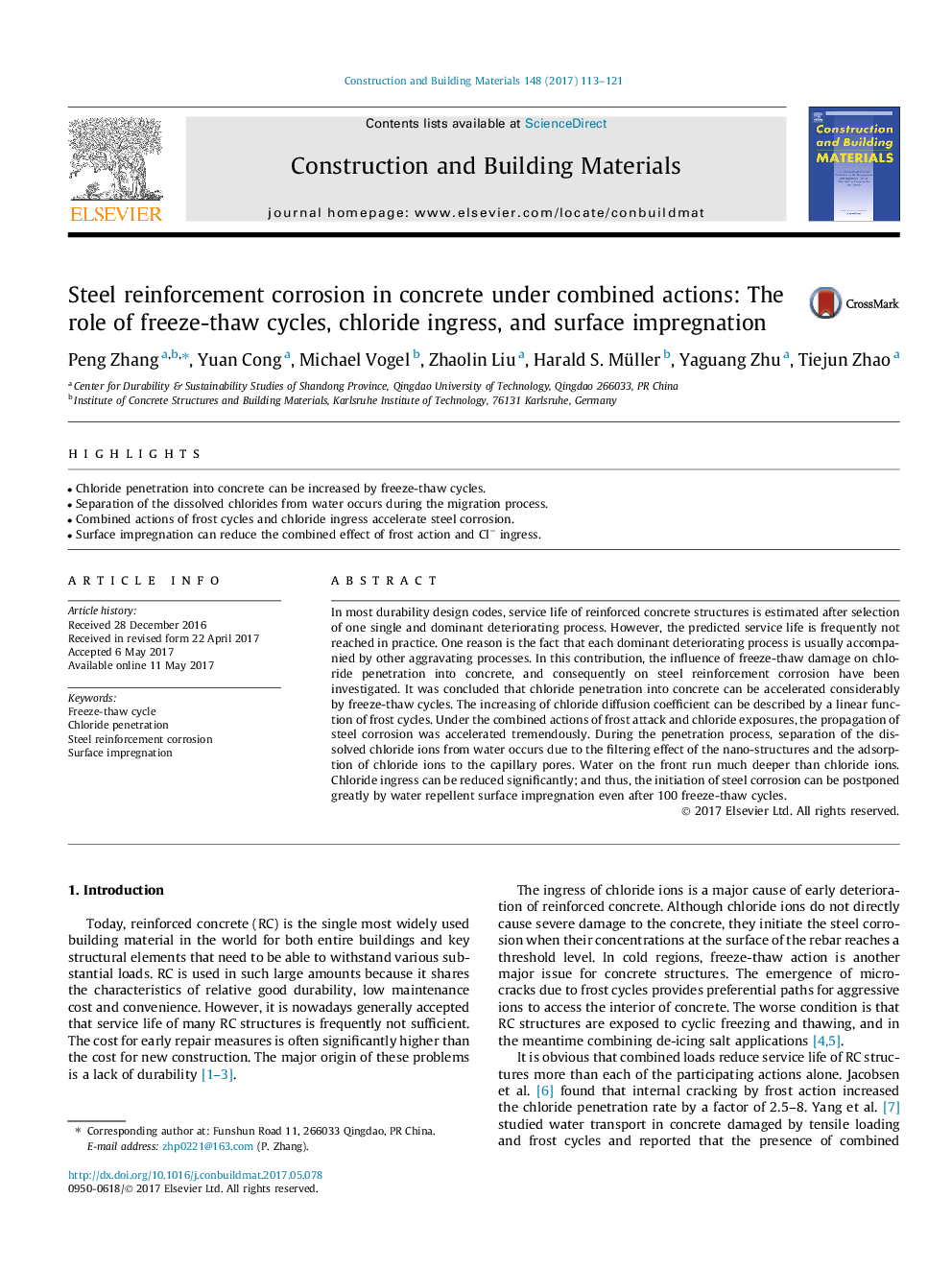| Article ID | Journal | Published Year | Pages | File Type |
|---|---|---|---|---|
| 6480282 | Construction and Building Materials | 2017 | 9 Pages |
â¢Chloride penetration into concrete can be increased by freeze-thaw cycles.â¢Separation of the dissolved chlorides from water occurs during the migration process.â¢Combined actions of frost cycles and chloride ingress accelerate steel corrosion.â¢Surface impregnation can reduce the combined effect of frost action and Clâ ingress.
In most durability design codes, service life of reinforced concrete structures is estimated after selection of one single and dominant deteriorating process. However, the predicted service life is frequently not reached in practice. One reason is the fact that each dominant deteriorating process is usually accompanied by other aggravating processes. In this contribution, the influence of freeze-thaw damage on chloride penetration into concrete, and consequently on steel reinforcement corrosion have been investigated. It was concluded that chloride penetration into concrete can be accelerated considerably by freeze-thaw cycles. The increasing of chloride diffusion coefficient can be described by a linear function of frost cycles. Under the combined actions of frost attack and chloride exposures, the propagation of steel corrosion was accelerated tremendously. During the penetration process, separation of the dissolved chloride ions from water occurs due to the filtering effect of the nano-structures and the adsorption of chloride ions to the capillary pores. Water on the front run much deeper than chloride ions. Chloride ingress can be reduced significantly; and thus, the initiation of steel corrosion can be postponed greatly by water repellent surface impregnation even after 100 freeze-thaw cycles.
